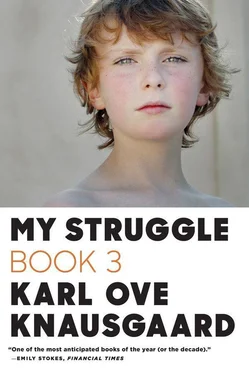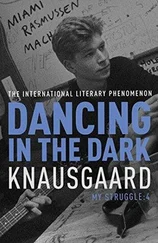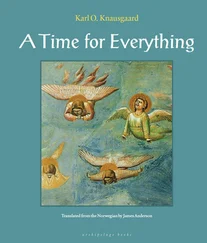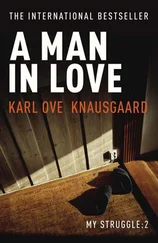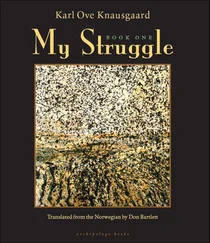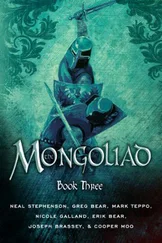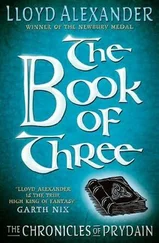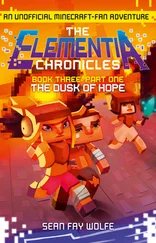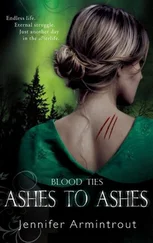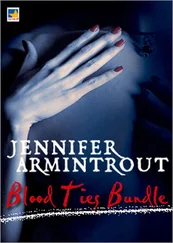However, as the incoming nuclear family slowly walked through the open countryside with all their bags and baggage it wasn’t the tenth or the thirteenth, the seventeenth or the nineteenth centuries that had left their marks on the surroundings. It was the Second World War. This region had been used by German forces; they had built the barracks and many of the houses. In the forest there were low-lying brick bunkers, completely intact, and on top of the slopes above the beaches several artillery emplacements. There was even an old German airfield in the vicinity.
The house where they were going to live during the coming year was a solitary construction in the middle of the forest. It was red with white window frames. From the sea, which could not be seen, though only a few hundred meters down the slope, came a regular crashing of waves. There was a smell of forest and salt water.
The father put down his suitcases, took out the key, and unlocked the door. Inside, there was a hall, a kitchen, a living room with a wood burner, a combined bath and washroom, and on the first floor, three bedrooms. The walls weren’t insulated; the kitchen was equipped with the minimum. No telephone, no dishwasher, no washing machine, no TV.
“Well, here we are,” the father said, carrying their suitcases into the bedroom while Yngve ran from window to window peering out and the mother stood the stroller with the sleeping baby on the doorstep.
Of course, I don’t remember any of this time. It is absolutely impossible to identify with the infant my parents photographed, indeed so impossible that it seems wrong to use the word “me” to describe what is lying on the changing table, for example, with unusually red skin, arms and legs spread, and a face distorted into a scream, the cause of which no one can remember, or on a sheepskin rug on the floor, wearing white pajamas, still red-faced, with large, dark eyes squinting slightly. Is this creature the same person as the one sitting here in Malmö writing? And will the forty-year-old creature who is sitting in Malmö writing this one overcast September day in a room filled with the drone of the traffic outside and the autumn wind howling through the old-fashioned ventilation system be the same as the gray, hunched geriatric who in forty years from now might be sitting dribbling and trembling in an old people’s home somewhere in the Swedish woods? Not to mention the corpse that at some point will be laid out on a bench in a morgue? Still known as Karl Ove. And isn’t it actually unbelievable that one simple name encompasses all of this? The fetus in the belly, the infant on the changing table, the forty-year-old in front of the computer, the old man in the chair, the corpse on the bench? Wouldn’t it be more natural to operate with several names since their identities and self-perceptions are so very different? Such that the fetus might be called Jens Ove, for example, and the infant Nils Ove, and the five- to ten-year-old Per Ove, the ten- to twelve-year-old Geir Ove, the twelve- to seventeen-year-old Kurt Ove, the seventeen- to twenty-three-year-old John Ove, the twenty-three- to thirty-two-year-old Tor Ove, the thirty-two- to forty-six-year-old Karl Ove — and so on and so forth? Then the first name would represent the distinctiveness of the age range, the middle name would represent continuity, and the last, family affiliation.
No, I don’t remember any of this, I don’t even know which house we lived in, even though Dad pointed it out to me once. All I know about that time I have been told by my parents or have gleaned from photos. That winter the snow was several meters high, the way it can be in Sørland, and the road to the house was like a narrow ravine. There Yngve is, pulling a cart with me in the back, there he is, with his short skis on, smiling at the photographer. Inside the house, he is pointing at me and laughing, or I am standing on my own holding on to the cot. I called him “Aua”; that was my first word. He was also the only person who understood what I said, according to what I have been told, and he translated it for Mom and Dad. I also know that Yngve went around ringing doorbells and asking if there were any children living there. Grandma always used to tell that story. “Are there any children living here?” she would say in a child’s voice and laugh. And I know I fell down the stairs, and suffered some kind of shock, I stopped breathing, went blue in the face, and had convulsions, Mom ran to the nearest house with a telephone, clutching me to her breast. She thought it was epilepsy, but it wasn’t, it was nothing. And I know that Dad thrived in the classroom, he was a good teacher, and that during one of these years he went on a trip into the mountains with his class. There are some photos from then, he looks young and happy in all of them, surrounded by teenagers dressed in the casual way that was characteristic of the early 1970s. Woolen sweaters, flared trousers, rubber boots. Their hair was big, not big and piled-up as in the sixties, but big and soft, and it hung over their soft teenage faces. Mom once said perhaps he had never been as happy as he was during those years. And then there are photos of Grandma on Dad’s side, Yngve, and me — two taken in front of a frozen lake, both Yngve and I were clad in large woolen jackets, knitted by Grandma, mine mustard yellow and brown — and two taken on the veranda of their house in Kristiansand, in one she has her cheek against mine, it is autumn, the sky is blue, the sun low, we are gazing across the town, I suppose I must have been two or three years old.
One might imagine that these photos represent some kind of memory, that they are reminiscences, except that the “me” reminiscences usually rely on is not there, and the question is then of course what meaning they actually have. I have seen countless photos from the same period of friends’ and girlfriends’ families, and they are virtually indistinguishable. The same colors, the same clothes, the same rooms, the same activities. But I don’t attach any significance to these photos, in a certain sense they are meaningless, and this aspect becomes even more marked when I see photos of previous generations, it is just a collection of people, dressed in exotic clothes, doing something that to me is unfathomable. It is the era that we take photos of, not the people in it, they can’t be captured. Not even the people in my immediate circle can. Who was the woman posing in front of the stove in the flat in Thereses gate, wearing a light-blue dress, one knee resting against the other, calves apart, in this typical 1960s posture? The one with the bob? The blue eyes and the gentle smile that was so gentle it barely even registered as a smile? The one holding the handle of the shiny coffee pot with the red lid? Yes, that was my mother, my very own mom, but who was she? What was she thinking? How did she see her life, the one she had lived so far and the one awaiting her? Only she knows, and the photo tells you nothing. An unknown woman in an unknown room, that is all. And the man who, ten years later, is sitting on a mountainside drinking coffee from the same red thermos top, as he forgot to pack any cups before leaving, who was he? The one with the well-groomed black beard and the thick black hair? The one with the sensitive lips and the amused eyes? Yes, of course, that was my father, my very own dad. But who he was to himself at this moment, or at any other, nobody knows. And so it is with all these photos, even the ones of me. They are voids; the only meaning that can be derived from them is that which time has added. Nonetheless, these photos are a part of me and my most intimate history, as others’ photos are part of theirs. Meaningful, meaningless, meaningful, meaningless, this is the wave that washes through our lives and creates its inherent tension. I draw on everything I remember from the first six years of my life, and all that exists in terms of photos and objects from that period, they constitute an important part of my identity, filling the otherwise empty and memoryless periphery of this “me” with meaning and continuity. From all these bits and pieces I have built myself a Karl Ove, an Yngve, a mom and dad, a house in Hove and a house in Tybakken, a grandmother and grandfather on my dad’s side, and a grandmother and grandfather on my mom’s side, a neighborhood and a multitude of kids.
Читать дальше
